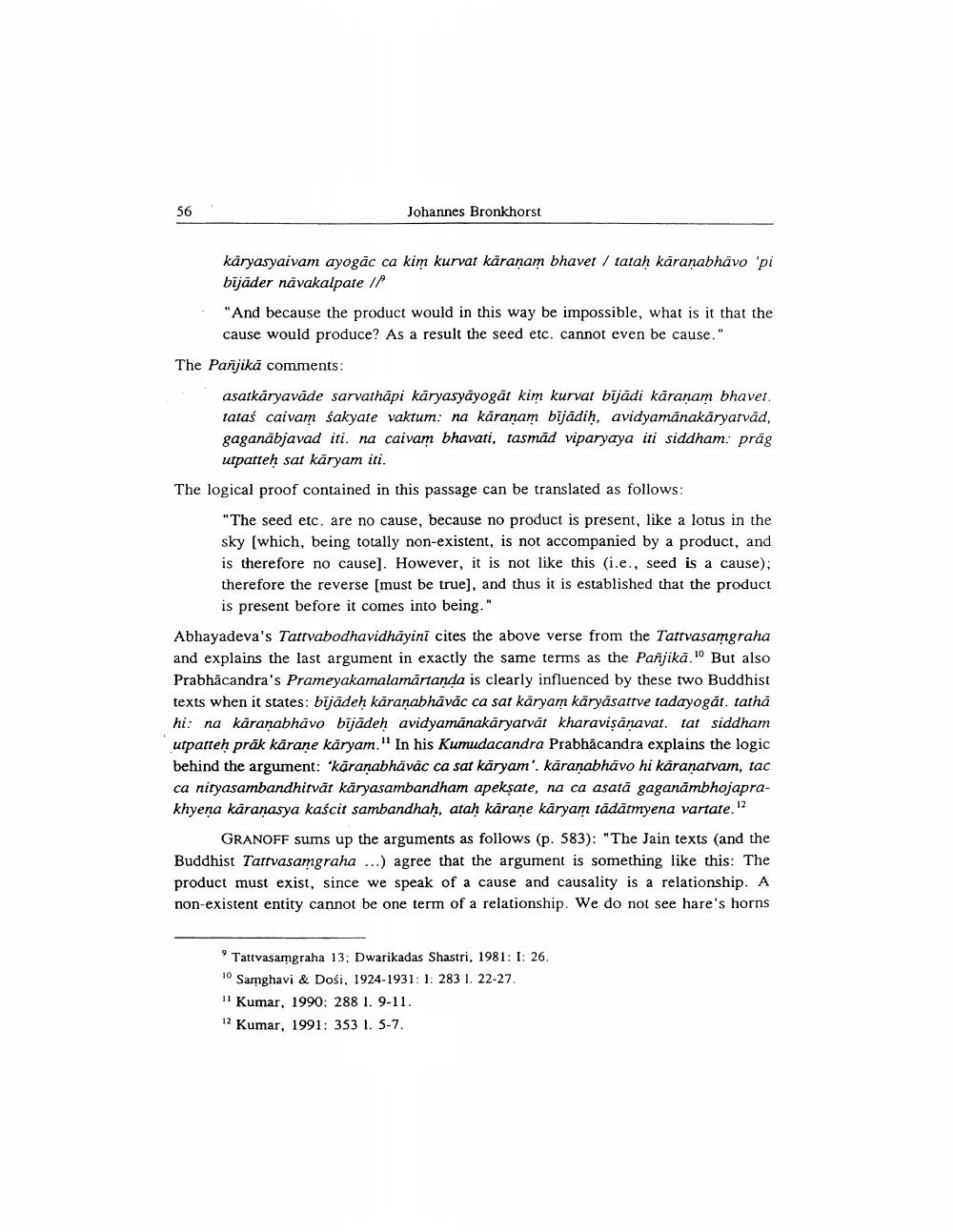Book Title: Last Reason For Satkaryavada Author(s): Johannes Bronkhorst Publisher: Johannes Bronkhorst View full book textPage 4
________________ S6 Johannes Bronkhorst karyasyaivam ayogāc ca kim kurvat kāraṇam bhavet / tatah karanabhávo 'pi bijāder nävakalpate // "And because the product would in this way be impossible, what is it that the cause would produce? As a result the seed etc. cannot even be cause." The Pañjika comments: asatkāryavāde sarvathāpi karyasyāyogāt kim kurvat bijādi kāraṇam bhaver. tataś caivam sakyate vaktum: na karanam bijādih, avidyamanakaryatvad, gaganābjavad iti. na caivam bhavati, tasmad viparyaya iti siddham: prāg utpatteḥ sat karyam iti. The logical proof contained in this passage can be translated as follows: "The seed etc. are no cause, because no product is present, like a lotus in the sky (which, being totally non-existent, is not accompanied by a product, and is therefore no cause). However, it is not like this (i.e., seed is a cause); therefore the reverse (must be true), and thus it is established that the product is present before it comes into being." Abhayadeva's Tattvabodhavidhayini cites the above verse from the Tattvasamgraha and explains the last argument in exactly the same terms as the Pañjikā. 10 But also Prabhācandra's Prameyakamalamartanda is clearly influenced by these two Buddhist texts when it states: bijādeh karanabhāvāc ca sat karyam kāryāsattve tadayogát. tatha hi: na karanabhāvo bijādeh avidyamanakāryatvāt kharavişānavar. tat siddham utpatteh prāk kärane käryam." In his Kumudacandra Prabhācandra explains the logic behind the argument: 'karanabhävāc ca sat karyam'. kāraṇabhāvo hi karanatvam, tac ca nityasambandhitvāt kāryasambandham apeksate, na ca asatā gaganāmbhojaprakhyena karanasya kaścit sambandhah, ataḥ karane käryam tādātmyena vartate. 12 GRANOFF sums up the arguments as follows (p. 583): "The Jain texts (and the Buddhist Tattvasamgraha ...) agree that the argument is something like this: The product must exist, since we speak of a cause and causality is a relationship. A non-existent entity cannot be one term of a relationship. We do not see hare's horns Tattvasamgraha 13; Dwarikadas Shastri, 1981: I: 26. 10 Samghavi & Dośi, 1924-1931: 1: 283 1. 22-27 11 Kumar, 1990: 288 1. 9-11. 12 Kumar, 1991: 353 1. 5-7.Page Navigation
1 2 3 4 5 6 7 8 9 10
